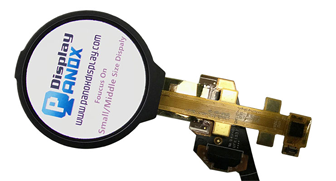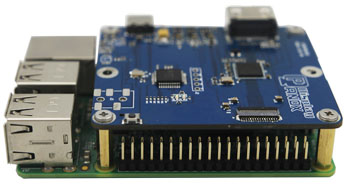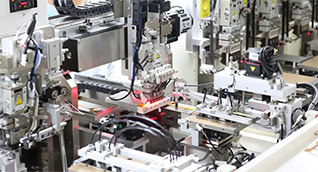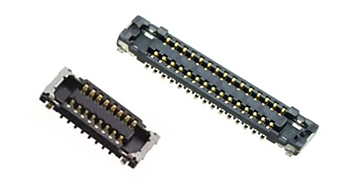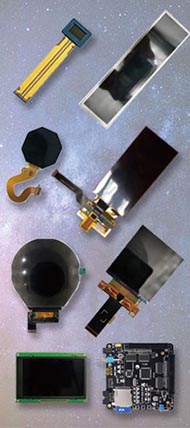A laser is a device that emits a coherent beam of light through stimulated emission, typically from an edge or surface of a gain medium. A VCSEL (Vertical Cavity Surface Emitting Laser) is a specific type of semiconductor laser that emits light vertically from the surface of the chip rather than from its edge. This fundamental difference impacts their beam quality, power, manufacturing, and applications.
What is a laser and how does it generally work?
A laser (Light Amplification by Stimulated Emission of Radiation) produces coherent, monochromatic light by exciting electrons in a gain medium to emit photons. The photons stimulate further emission, amplifying light within an optical cavity formed by mirrors. Traditional lasers often emit light from the edge of the gain medium (edge-emitting lasers), where the optical cavity lies parallel to the wafer surface. The emitted beam can be highly directional but often requires complex optics for coupling and beam shaping.
What is a VCSEL and how does it differ from traditional lasers?
A VCSEL is a semiconductor laser diode that emits light perpendicular to the surface of the semiconductor wafer, rather than from the edge. It features a very short vertical cavity formed by distributed Bragg reflectors (DBRs) above and below the active region. This vertical emission allows VCSELs to produce a circular, low-divergence beam that is easy to couple into optical fibers and optical systems. Unlike edge-emitting lasers, VCSELs can be tested during manufacturing at the wafer level, improving yield and lowering costs.
How do the beam characteristics of lasers and VCSELs compare?
| Feature | Edge-Emitting Laser (EEL) | VCSEL |
|---|---|---|
| Emission Direction | Horizontal (edge of the chip) | Vertical (surface of the chip) |
| Beam Shape | Elliptical, highly divergent | Circular, low divergence |
| Beam Quality | Good but requires optics for shaping | Excellent, near diffraction-limited |
| Coupling Efficiency | Lower, often <50% | High, often >80% |
VCSELs produce a more uniform, circular beam, simplifying optical system design and improving fiber coupling efficiency.
Why are VCSELs more efficient and easier to manufacture than traditional lasers?
VCSELs have several manufacturing and operational advantages:
-
Wafer-Level Testing: VCSELs can be tested on the wafer before dicing, reducing waste and improving yield.
-
Lower Threshold Current: The short cavity and efficient design require less electrical power to achieve lasing.
-
Array Integration: VCSELs can be fabricated in two-dimensional arrays, enabling scalable power and compact modules.
-
Simplified Packaging: Vertical emission allows easier integration with optical components and electronics.
In contrast, edge-emitting lasers require cleaving of the wafer to form the cavity and testing only after packaging, increasing complexity and cost.
What are the typical applications of VCSELs compared to traditional lasers?
VCSELs are widely used in:
-
Data communications (short-reach fiber optics)
-
3D sensing (Face ID, gesture recognition)
-
Laser printers and optical mice
-
Industrial sensing and illumination
Traditional edge-emitting lasers dominate in:
-
Long-distance fiber optic communications
-
High-power industrial laser systems
-
Medical and scientific instrumentation requiring high output power
VCSELs excel in applications needing compact size, low power, and high beam quality, while traditional lasers serve high-power or long-range needs.
How do power and modulation capabilities differ between lasers and VCSELs?
VCSELs generally operate at lower output powers compared to edge-emitting lasers but offer faster modulation speeds due to their short cavity length. This makes VCSELs ideal for high-speed data transmission up to several gigabits per second. Edge-emitters can achieve higher power outputs but often require external modulators for high-speed operation.
How does thermal management differ between lasers and VCSELs?
Edge-emitting lasers typically generate more heat due to higher power densities and require robust cooling solutions. VCSELs, with their lower threshold currents and power, produce less heat and can be cooled more easily, enabling denser integration and longer device lifetimes.
What role does Panox Display play in laser and VCSEL technologies?
Panox Display supports the laser industry by providing high-quality OLED and LCD display solutions for laser system interfaces and monitoring. Their custom displays enable precise control and real-time feedback in VCSEL-based devices and traditional laser systems, enhancing usability and performance. Panox Display’s flexible and micro-OLED products are especially valuable in compact laser modules where space and power efficiency are critical.
How are lasers and VCSELs evolving with current technology trends?
Recent advances include:
-
VCSEL Arrays: Increasing output power by integrating many VCSELs in arrays for industrial and sensing applications.
-
Wavelength Diversity: Expanding VCSEL emission wavelengths for new uses in sensing and communications.
-
Hybrid Integration: Combining VCSELs with silicon photonics and advanced electronics.
-
Improved Beam Quality: Innovations in cavity design for even lower divergence and higher coherence.
Panox Display continues to innovate alongside these trends by delivering cutting-edge display technologies that complement evolving laser systems.
What are the key considerations when choosing between a laser and a VCSEL?
| Consideration | Edge-Emitting Laser | VCSEL |
|---|---|---|
| Output Power | Higher, suitable for long-range | Moderate, ideal for short-range |
| Beam Quality | Good but elliptical beam | Excellent, circular beam |
| Size and Integration | Larger, complex optics needed | Compact, easy to integrate |
| Cost | Typically higher | Lower due to wafer-level testing |
| Application | Telecom, industrial, medical | Data comms, sensing, consumer tech |
Selecting the right laser depends on application requirements, power needs, and system design constraints.
Panox Display Expert Views
“The distinction between traditional lasers and VCSELs is fundamental to modern photonics. VCSELs’ vertical emission and wafer-level testing revolutionize manufacturing efficiency and system integration. At Panox Display, we focus on delivering display solutions that enhance the control and monitoring of both laser types, ensuring precision and reliability in diverse applications from communications to medical devices. Our commitment to innovation supports the evolving laser landscape with tailored display technologies.”
Conclusion
Understanding the difference between a laser and a VCSEL is crucial for selecting the right light source for your application. VCSELs offer compact size, high beam quality, and manufacturing advantages, making them ideal for data communications and sensing. Traditional lasers provide higher power and long-range capabilities for industrial and telecom uses. Panox Display’s expertise in display integration empowers users to maximize the performance and control of both laser types, driving innovation across industries.
FAQs
What does VCSEL stand for?
VCSEL stands for Vertical Cavity Surface Emitting Laser, a semiconductor laser emitting light perpendicular to the chip surface.
Can VCSELs replace traditional lasers in all applications?
No, VCSELs are best for low to moderate power, short-range applications, while traditional lasers suit high-power, long-distance uses.
Why is the beam shape important?
Beam shape affects coupling efficiency and system design; VCSELs produce circular beams that simplify optics compared to elliptical beams from edge-emitters.
How does Panox Display enhance laser systems?
Panox Display provides high-quality OLED and LCD panels for laser system interfaces, improving control, monitoring, and user experience.
Are VCSELs more energy-efficient than traditional lasers?
Yes, VCSELs typically require less electrical power due to lower threshold currents and efficient design.











